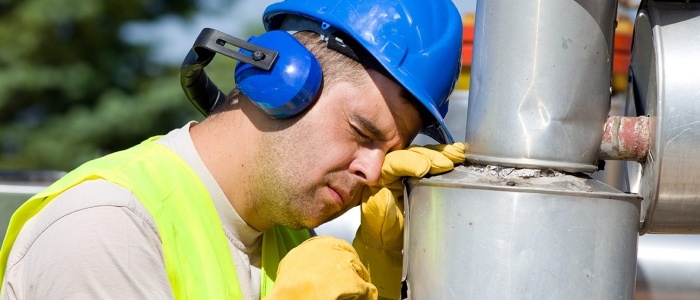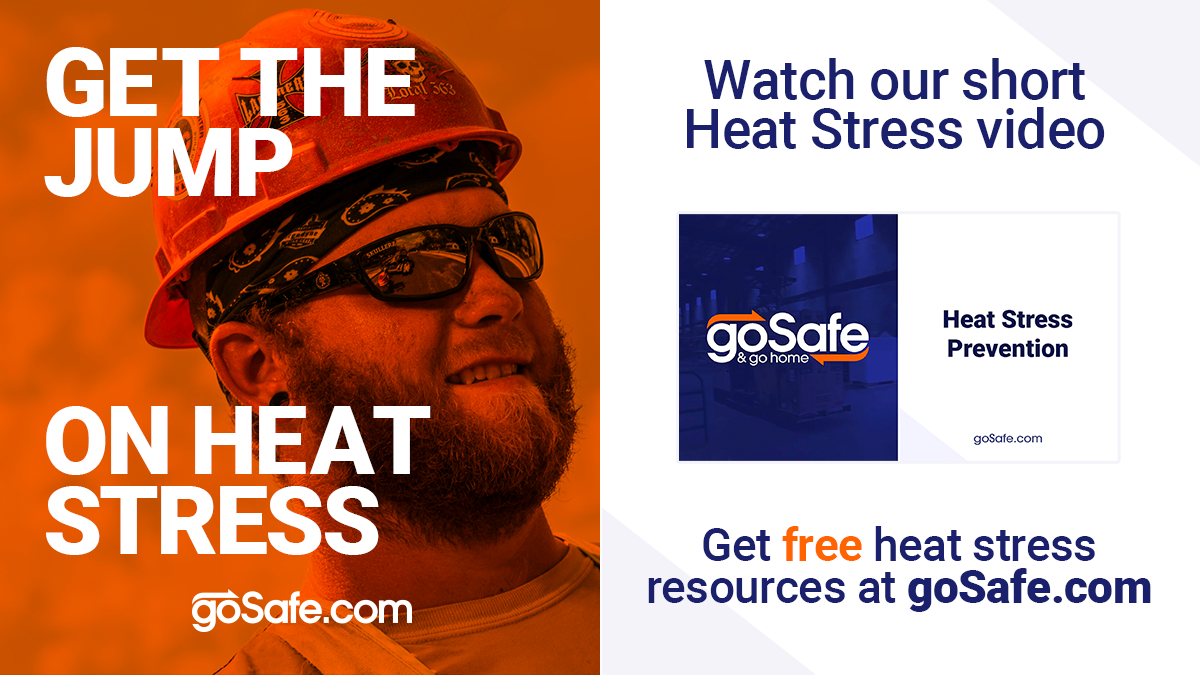Picture this. It’s a blistering summer afternoon in Houston, Texas. The temperature outside is upwards of 90⁰, but the humidity is making the air feel like a sauna. It’s Construction Worker Carl’s first day on the job. He’s eager to show off his twenty years of welding experience to his new coworkers.
Carl knows he needs protection from the sun; he gives his skin as little sun exposure as possible by wearing heavy blue jeans and a long-sleeved shirt. He is so anxious to help the team get the job done that he doesn’t eat during their lunch break. He sips water provided at the jobsite throughout the day, but he knows the crew has an important deadline to meet so he doesn’t take many breaks. He tries to forget the heat and focus on the task at hand.
If you think that this sounds like a recipe for disaster, you’re right."
In the United States, an average of 702 heat-related deaths occur each year. In addition, there are 67,512 emergency department visits due to heat, with an average of 9,235 people hospitalized due to heat. Understanding the heat stress index could have helped prevent many of these cases.
When it comes to staying cool while working in the heat, there are a few basic principles that can reduce the chances of heat related illness or injury. When workers are focused on the task at hand, these principles can be compromised or ignored entirely. During the hotter months, when the heat index becomes a serious concern, it's important to take extra precautions. This is especially true for jobs that involve:
-
Working outdoors,
-
Heavy lifting and physical exertion,
-
Wearing bulky PPE,
-
Using machinery or equipment that produces a lot of heat.
Use the heat index chart to stay informed and prepared
Although the U.S. Department of Labor doesn’t have a standard of compliance that specifically covers working in the heat, employers still have a duty to provide their workers with the safest environment possible and to protect them from job site hazards - including high outdoor temperatures. For more info on protecting your workers from heat stress click here
Using the OSHA-recommended heat index chart will help you figure out the level of precautions needed to prevent HRIs. The index states:
- Temperatures below 91°F – Low: Basic heat safety and planning are generally sufficient to minimize risk.
- Temperature between 91°F and 103°F – Moderate: Implement precautions and heighten awareness among workers, whether by posting signs or holding a brief toolbox talk before each shift.
- Temperatures between 103°F and 115°F – High: Additional measures are needed, such as regular check-ins by on-site supervisors.
- Temperatures higher than 115°F – Extreme: More aggressive measures are needed and workers should be instructed to take breaks in the shade at regular intervals and drink water regardless of thirst.
When the heat rises, so does the risk level
Many people think they’ll be able to tell when they get overheated and need to rest or drink some water. However, when temperatures rise, the symptoms of heat syncope can come on quickly and unexpectedly.
Heat syncope is a heat-related illness that can result from being physically active while the weather is hot. In those situations, the body tries to cool itself by dilating blood vessels, which reduces blood flow to the brain. The symptoms of heat syncope can include:
- Dizziness
- Confusion
- Loss of grip control
- Fainting
The risk is even greater when wearing extensive PPE, working at heights or in confined spaces, or operating heavy machinery.
Other dangers of working in hot conditions include heat stroke, heat exhaustion, heat cramps, and heat rashes. It can also lead to rhabdomyolysis, a condition that can cause irregular heart rhythms, seizures, and kidney damage. Check out goSafe's Warm Weather ppe solutions here.
To cope with these extra risks, workers should be reminded to drink water frequently, even if they’re not feeling thirsty. In addition to providing plenty of access to water, employers can also post urine color charts in washrooms. These charts show how dehydration affects urine: the darker it is, the more likely the body is dehydrated.

Which workers are most vulnerable to heat-related injuries?
Anyone who works in a hot environment is at risk of HRIs, including:
- Construction workers
- Road Crews
- Bakers
- Farmers
- Miners
- Boiler room operators
- Factory workers
- Fire Fighters
New workers or workers just returning to work are more vulnerable to hot weather hazards. Cal/OSHA investigated 25 HRI incidents in 2005. Almost half of the cases involved a worker on their first day on the job, and in 80% of the cases the worker had only been on the job fewer than five days. It’s important, then, to take extra precautions with new workers and help them acclimate to the job site.
Other factors that increase HRI risk and warrant extra precaution include:
- Age (especially those 65 and over),
- Weight,
- Heart disease or high blood pressure,
- Medications that may be affected by extreme heat,
- Recent illness.
Beat the heat! Recognize the signs and take action
Making sure that workers stay safe requires having safety policies that outline exactly what to do when a worker exhibits symptoms of heat stress. These include:
- Headache
- Nausea
- Dizziness
- Muscle cramps
- Irritability or confusion
- Heavy sweating
- Redness of skin
- Elevated body temperature
- Decreased urine output
If any worker demonstrates these symptoms, give them immediate assistance.
First, the worker should be removed from the hot area and given cool liquids to drink. Then, they should remove unnecessary clothing, including shoes and socks. At least one employee should be designated to wait with the affected worker until medical help arrives.
Take the worker to a clinic or emergency room for medical evaluation and treatment. If the symptoms are severe, call 9-1-1.
Now, let’s go back to Construction Worker Carl
Carl did a few things wrong. While you can’t argue with the importance of trying to minimize your skin’s exposure to the sun, Carl wore heavy clothing which caused his internal temperature to go up. Long sleeves and long pants are acceptable when other precautions are taken, but Carl didn’t do that either.
For example, not eating during lunch was a huge mistake. Your body needs plenty of water to prevent it from becoming dehydrated, but it also needs food to fuel you through your workday. Skipping lunch can cause light-headedness, headache, and dizziness which only worsen your risk of developing an HRI.
Carl also didn’t take needed breaks during his scorching work day. At his morning toolbox talk, Carl heard that he could use the air-conditioned construction trailer that was on site to cool down if he ever felt over-heated. Carl may have heard this, but he didn’t listen; he decided to power through to get his welding work done on time. Yes, it’s important to meet deadlines, but safety is always the first priority.
Luckily, Carl’s supervisor checked in with him after his shift to see how his first day went. The experienced supervisor noticed Carl seemed a little “out of it,” and sought medical help so that Carl could be examined for heat syncope. Carl was able to return home to his wife and kids that warm summer evening. He now knows – and complies with – the proper procedures to follow when the heat gets too high.
Paying attention to the temperature and using the heat index chart is critical to responding to heat stress before it turns serious. Train your workforce to recognize the signs and remind them to look out for each other’s safety."
If you plan ahead, you’ll be able to beat the heat, protect your workers, and show your commitment to their safety. Check out goSafe's Warm Weather ppe solutions here.








